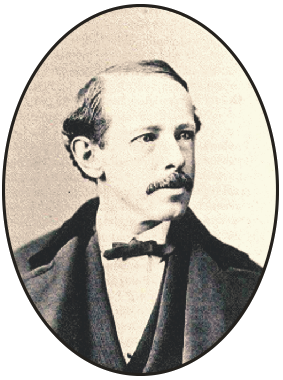Are My Boys Real?
By Horatio Alger, Jr.
As published in the Ladies' Home Journal, November, 1890

The idea is suggested that young people will be interested to learn whether the boy characters in my books are taken from real life. I answer in general terms that I have always preferred to introduce real boys into my stories, and have done so in many instances where it has become possible for me to find a character suited to a plot.
The first street boy with whom I became acquainted in New York was Johnny Nolan, a young boot-black, who made daily calls at the office of one of my friends whose office, in 1867, was on Spruce street, on the site now occupied by the “Tribune” building. My conversations with him gave me my first knowledge of New York street-boys and their mode of life. My interest was excited, and led me a few months later to undertake the story of “Ragged Dick”, in which Johnny figures. I have described him as he was – a good-natured but lazy boy, without enterprise or ambition. I gave Johnny a copy of the book when it appeared, and he was quite proud at figuring in print. The original of”Micky Maguire” was Paddy Shea, a tough character, who lived not far from the City Hall, and generally passed the summer at “the island.” “Ragged Dick” was a real name, but I never knew the boy who bore it.
I met the hero of “Rough and Ready” at the Newsboys’ Lounge, in the upper part of the old “Sun” building. “Ben, the Luggage Boy” I met at that same place, and the story of that name substantially accords with his. The boys who made for themselves a home beneath one of the piers, were known to Superintendent O’Connor, and he arranged for me an interview with one of them. I had many conversations with many street boys while writing “Ragged Dick” and “Tattered Tom” series, and derived from many of them sketches of character and incidents.
When I was preparing to write “The District Telegraph Boy,” I sent for a boy who had served in that capacity for nearly two years, and used some of the incidents he supplied to me. “Phil the Fiddler” was a real Italian boy. I obtained the picture which appears in the book, from a Broadway photographer, to whom he sat for it. Mr. Casale, then editor of an Italian semi-weekly paper in New York, furnished me with many of the incidents.
Some of the characters in “The Young Circus Rider” are still living, in particular Charlie Davis, who left home at an early age and accompanied a circus to Australia. In “Frank’s Campaign,” the boys forming the military company commanded by Frank Frost, were all real boys, and all, with one exception, are living to-day. The colored boy, little Pomp, in the same story, was intended as a male counterpart to Mrs. Stowe’s “Topsy.”
I have, by request, given to many of my characters the real names of young friends and acquaintances without necessarily making them portraits. Some of my books and serial stories were suggested in part by incidents in the lives of young persons whom I knew. I am now writing for a juvenile publication a story called “The Erie Train Boy.” Fred, the hero, served in that capacity last summer, securing the position through me.
I am often indebted for characters and incidents to paragraphs in the daily press. Whenever I find one that seems available, I follow the example of Charles Reade, and cut it out for future reference. I have probably written seventy-five juvenile books and serials, and I have no hesitation in saying that ir would have been quite impossible for me to write half the number if I had not drawn in large part my characters and material from real life. The story of “Joe’s Luck”, located in California, was written in San Francisco. Years afterward the name of the book was given to a mine in Southern Africa, of which a picture appeared in the “London Illustrated News”. In like manner I went to Chicago in October, 1887, to obtain material for a story just published in book-form, called “Luke Walton: or, the Chicago Newsboy.”
I have, of course, introduced a large number of adult characters in my various stories. Many of these are special studies from life. I hold that a novelist, or writer of fiction, is best situated in a large city, where he has an opportunity to study life in many phases, and come in contact with a large variety of types of character. The experience of prominent American and foreign novelists, notably of Charles Dickens, will bear me out in this statement.
The Ladies’ Home Journal
Philadelphia, November, 1890



